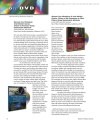Natural Dye Workshop with Michel Garcia and Sustainable Dye Practice
A film series and discussion forum dedicated to the science and practice of natural dyes and pigments using sustainable methods.
Profile of Conostegia xalapensis (Melastomataceae)
Physiol Plant. 2012 Feb;144(2):134-45. doi: 10.1111/j.1399-3054.2011.01527.x. Epub 2011 Nov 21.
Conostegia xalapensis (Melastomataceae): an aluminum accumulator plant.
González-Santana IH, Márquez-Guzmán J, Cram-Heydrich S, Cruz-Ortega R.
Source
Laboratorio de Alelopatía, Departamento de Ecología Funcional, Instituto de Ecología, UNAM, Circuito Exterior s/n anexo al Jardín Botánico Exterior, Ciudad Universitaria, Delegación Coyoacán, C.P. 04510, México D.F., México.
Abstract
In acidic soils, an excess of Al³⁺ is toxic to most plants. The Melastomataceae family includes Al-accumulator genera that tolerate high Al³⁺ by accumulating it in their tissues. Conostegia xalapensis is a common shrub in Mexico and Central America colonizing mainly disturbed areas. Here, we determined whether C. xalapensis is an Al accumulator, and whether it has internal tolerance mechanisms to Al. Soil samples collected from two pastures in the state of Veracruz, Mexico, had low pH and high Al³⁺ concentrations along with low Ca²⁺ levels. Leaves of C. xalapensis from pastures showed up to 19,000 mg Al kg⁻¹ DW (dry weight). In laboratory experiments, 8-month-old seedlings treated with 0.5 and 1.0 mM AlCl₃ for 24 days showed higher number of lateral roots and biomass. Pyrocatechol violet and hematoxylin staining evidenced that Al localized in epidermis and mesophyll cells in leaves and in epidermis and vascular pith in roots. Scanning electron microscope-energy dispersive X-ray microanalysis of Al-treated leaves corroborated that Al is in abaxial and adaxial epidermis and in mesophyll cells (31.2%) in 1.0 mM Al-treatment. Roots of Al-treated plants had glutathione reductase (EC 1.6.4.2) and superoxide dismutase (EC 1.15.1.1) activity higher, and low levels of O₂*⁻ and H₂O₂. C. xalapensis is an Al-accumulator plant that can grow in acidic soils with higher Al³⁺ concentrations, and can be considered as an indicator species for soils with potential Al toxicity.



